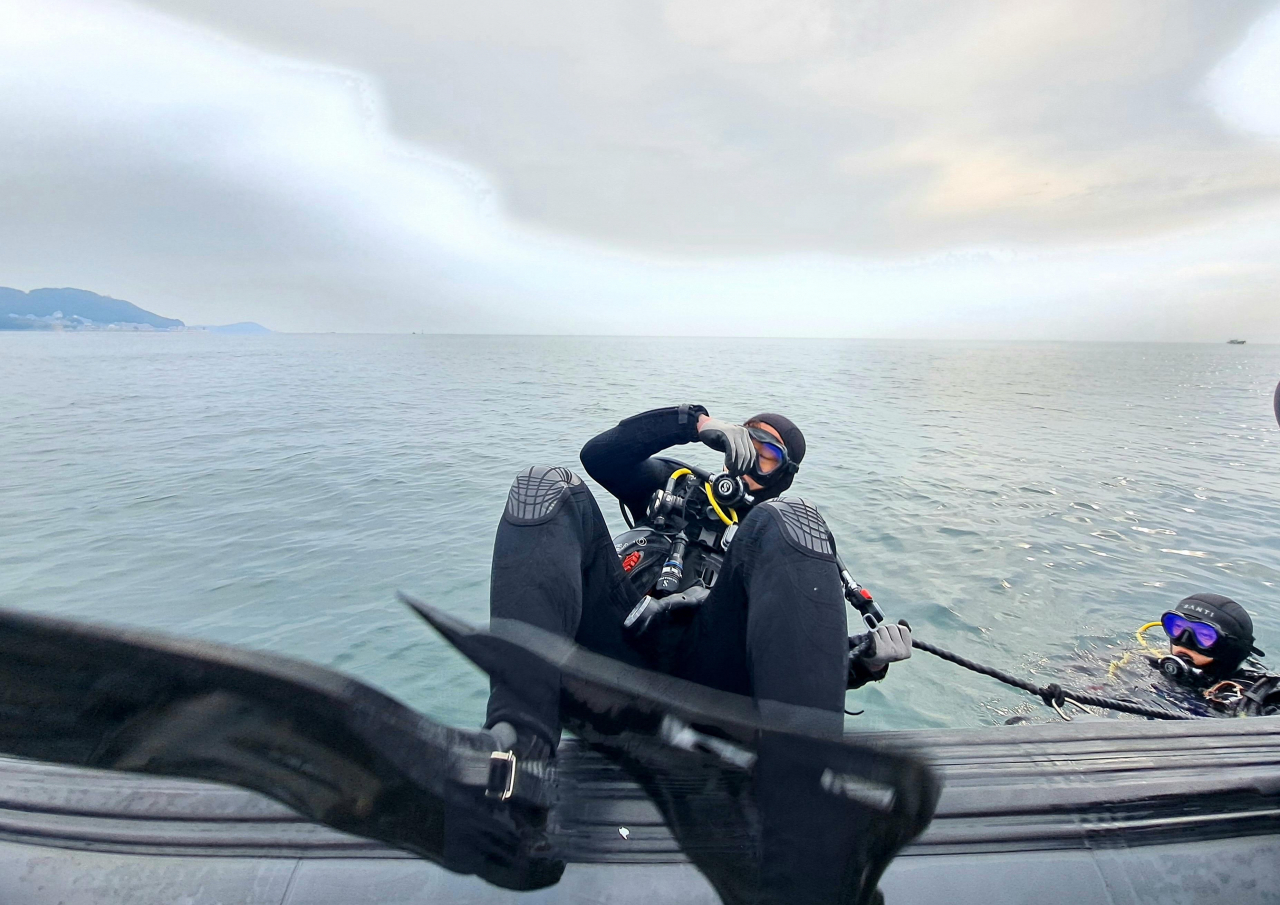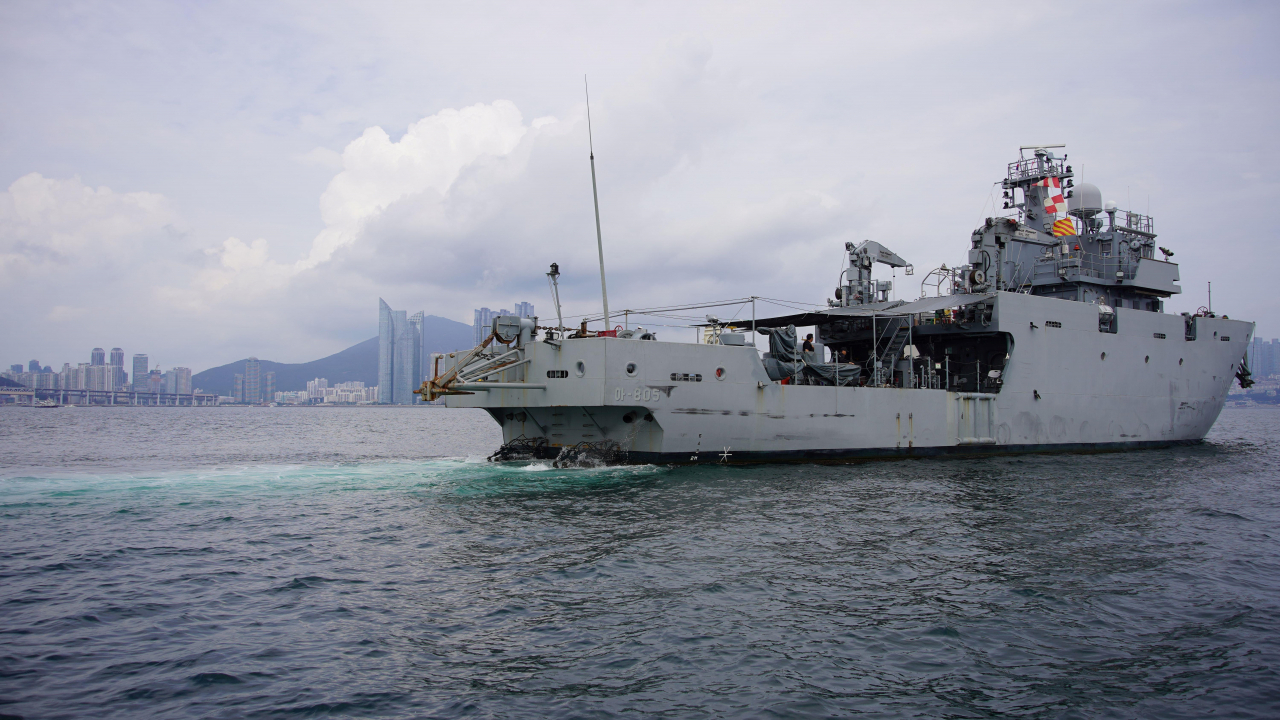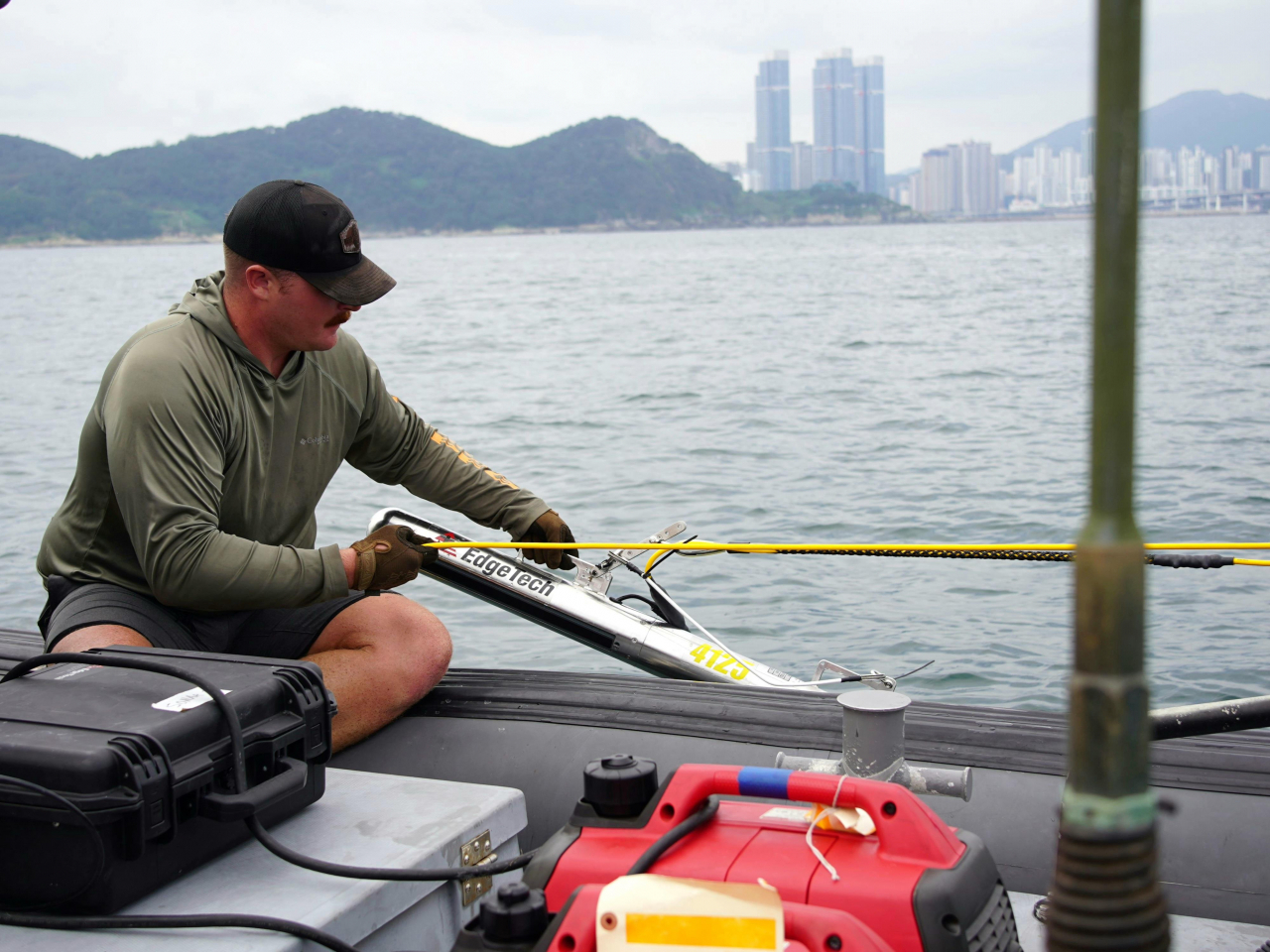S. Korea, US conduct underwater search operation for downed jet, Korean War remains
By Ji Da-gyumPublished : Sept. 22, 2023 - 15:22

Seoul and Washington embarked on their inaugural joint underwater search operation, aiming to locate the wreckage of a US fighter jet and the remains of American pilots who lost their lives during the 1950-53 Korean War in the waters of the East Sea on the Korean Peninsula.
South Korea's Ministry of National Defense Agency for Killed in Action Recovery Identification (MAKRI) and the US Defense POW/MIA Accounting Agency (DPAA) commenced a three-week retrieval operation on Sept. 7 in the waters off the southern port city of Busan, located 320 kilometers southeast of Seoul, the MAKRI said on Friday.
The search operation is centered on a Martin B-26 Marauder bomber, a part of the US 5th Air Force, which plunged into the sea shortly after departing from Busan's K9 airfield in January 1953. The joint efforts of the MARKI and DPAA are also dedicated to retrieving the remains of the three US pilots who tragically lost their lives in the aftermath of the jet crash.
The collaborative underwater recovery mission was initiated at the request of the US, marking the occasion of the 70th anniversary of the South Korea-US alliance established in 1953, according to the MARKI.
The underwater operation involves the use of underwater detection equipment within an area spanning roughly 20 square kilometers of water. When any unusual objects are detected, divers and remote sensing devices are then deployed to provide additional verification of debris, including remnants of fighter aircraft, on the seabed.
Seoul and Washington employ Sound Navigation and Ranging, or SONAR, technology, attached to a mine countermeasures ship, to investigate underwater topography in regions with significant water depths. SONAR operates by using sound waves to detect or locate submerged objects.
The joint South Korean-US team also meticulously surveys the seabed at depths ranging from approximately 5 to 25 meters near Haeundae Beach in Busan, operating from a high-speed boat. They achieve this by towing side-scan sonar equipment and magnetometers on the boat.
Subsequently, South Korean and US divers descend to underwater locations suspected of containing remains or jet debris. They conduct underwater search operations using metal detectors, underwater navigation tools and various other pieces of equipment.
On the US side, a team of 13 individuals, including divers and underwater archaeologists associated with DPAA, along with seven divers from the US Naval Forces Korea, has been deployed for the operation. On the South Korean side, a team of specialized investigators and 10 divers from the Sea Salvage and Rescue Unit, in addition to naval assets, has been mobilized.























